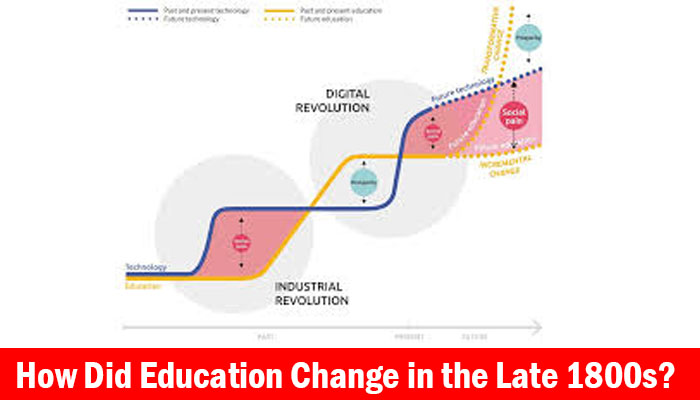How Did Education Change in the Late 1800s?
In the late 1800s, teachers and administrators were faced with the dilemma of what to teach students. With the shortage of teachers and the need to educate large numbers of students, the one-teacher school system was a practical and affordable solution. In the one-room schoolhouse, one teacher could teach a large number of students, sometimes without a book or even a teacher at all. This arrangement also allowed a single teacher to concentrate on the lessons rather than on enforcing discipline and reward.
In the late 1800s, many changes were made to American education. A German kindergarten model was adopted widely, trade schools were founded, and city-wide boards of education were established. The number of schools for African-American children also increased. In the early 1800s, education was considered primitive, with children of all ages attending the same common school. The older students were expected to teach the younger students. By the early 19th century, schools aimed to educate children and improve their lives.
In the early 1800s, education was very basic. The children were taught together in the same school, often in a common room. The teachers were expected to teach the young ones, but this was not always feasible. In 1834, the British Parliament passed the Education Act, which gave more money to schools and teachers. In the 1840s, age grading was introduced. This meant that students in each grade had distinct lesson plans and were expected to learn certain skills during the school year. Textbooks were also standardized, ensuring that all students were taught the same level of education, regardless of where they lived.
In the late 1800s, many changes took place in the field of education. The German kindergarten model was widely adopted, trade schools were established, and city-wide boards of education began to exist. With these changes, the school became a less exclusive privilege for the wealthy and more a way to integrate children from all backgrounds into society. There were also an increasing number of private secondary schools and a great expansion in the number of colleges.
In the early 1900s, the common school was a public school. In most cases, this was a one-room school. The common school taught children from ages six to fourteen, corresponding to grades one to eight. In 1877, all states had free elementary schools and by 1910, the U.S. had the highest literacy rate in the world. Before 1877, there were few schools in rural areas, and children attended only one in the city. How Did Education Change in the Late 1800s?
The education system was not the same as it is today. In the late 1800s, teachers, and students, in general, were taught by the same teacher. The older students had to help the younger ones. Eventually, age grading was introduced and children were divided into different grade levels. During this time, each student was expected to learn particular skills during the school year. In addition, textbooks were standardized, which ensured the same quality of education throughout the region.
In the late 1800s, schoolchildren learned not only reading and math but also science and social studies. Their education was still highly structured, and teachers were often required to prepare them for higher-level study. In contrast, in the 1990s, the American school system was far more modern. The goal of education was to help the country prosper economically. A child had to learn how to make money, and the teacher had to know how to make this happen.
The late 1800s saw several changes in the education system. For example, the German kindergarten model was adopted widely and trade schools were established. At the end of the 1830s, philanthropists and churches began to place an emphasis on education and training. Parents often had to pay for their children’s schooling, and they often had to purchase supplies to teach. This created a need for teachers to provide an adequate educational experience for their students.
